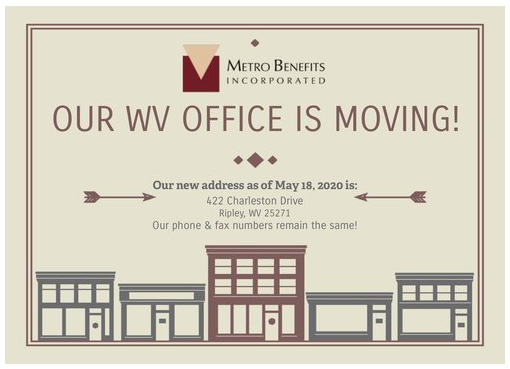January, 2020
Purpose:
To provide you with an update on recent pension legislation, called “The SECURE Act”. (This stands for “Setting Every Community Up for Retirement Enhancement Act of 2019”). It makes some important changes, probably the most in a decade. This is not intended to be a comprehensive review, just a quick summary. Let us know if we can provide more detail.
1. Age 70 ½ required distributions modified
The required beginning date has been changed from age 70 ½ to age 72. This reflects increasing longevity, (especially given that age 70 ½ started being used in the 1960’s).
(Effective Date: Payouts for those reaching age 70 ½ after 12/31/19.)
2. “Open” Multiple Employer Plans (“MEPS”) are now allowed
Before we dive into this issue, a little background will be helpful. Most of the plans that we deal with are considered to be “single employer” plans. Then, there are other plans called “multi-employer plans, which are collectively bargained Union plans (ex: Teamsters, Airline pilots, etc.) Neither of these plan types are affected by this change.
Beyond that, there are plans that serve as a “group plan” for more than one, unrelated employer. These are called “Multiple Employer Plans”, or MEPS. Examples include the Association of car dealers (“NADART”), The American Bar Association Plan (“ABA”), etc. MEPS allow employers to pool resources to achieve efficiencies of scale. Until now, the employers in these MEP plans had to have some type of “commonality”, perhaps because they are in the same industry, same geographic area, etc.
The SECURE Act removes this commonality requirement, so that any employers can join forces. This may be a very big deal, as large group “Open MEPS” will likely be created in the future. Down the road, we may even set one up for our clients. The main advantage is potential cost savings (ex: one tax return, one audit, one plan document, etc.) Potential disadvantages include loss of flexibility and control. Time will tell.
(Effective: Plan years beginning 1/1/21, although this may be delayed.)
3. Tax Credits for Adopting Plans/Auto-Enroll
There have been small tax credits available for several years, for employers who adopt a new plan. These credits have been minimal, and often overlooked. Congress has a strong desire to have more employees “covered” by a retirement plan, so, accordingly, they have significantly increased this tax credit. (Note: “credit”, not “deduction”). But there is a string attached.
The basic tax credit has increased from $500, to up to $5,000, for the adoption of a new plan. This can be applied against 50% of the actual start-up cost. This will cover a lot of start-up costs! The actual amount is based upon how many “Non-Highly Compensated Employees” are covered, and is determined as $250 per such employee (maximum $5,000). The “string attached” is that the Employer can receive an additional tax credit of $500 for the first 3 years of the plan, but only if the plan provides for “automatic enrollment.”. This is where newly-eligible employees are automatically covered by the plan, unless they opt out. (Without this provision, they have to “opt in” to be covered.) Again, we can see here Congress’ enthusiasm for more coverage.
(Effective: Plans created after 1/1/20.)
4. Encouragement of “Lifetime Income”
Another goal of Congress is to ensure that people don’t run out of money during their retirement. There is concern that the 401(k) universe is all about lump sum payouts, rather than monthly retirement income. To encourage monthly income, Congress has made a couple of changes. First, the amount of estimated monthly income will need to be shown on 401(k) benefit statements. This information, using a format and assumptions to be determined by the DOL, may be helpful to an employee trying to plan for their retirement. Further, the new law reduces fiduciary responsibility for the Plan Sponsor in selecting an annuity-provider. This had been a barrier to lifetime income in the past.
(Effective: 12 months after the DOL issues interim regulations; don’t hold your breath.)
5. More Time to adopt a New Plan
Until now, a new plan had to be adopted (signed plan document) by December 31, assuming that the Plan year is a calendar year. This causes a year-end rush. In order to make it easier for a new plan to be adopted, this deadline has been extended to the Employer’s tax return due date, including extensions.
(Effective: Plans established on or after 1/1/20.)
6. Easier to have a “Safe Harbor” 401(k) Plan
A “Safe Harbor 401(k) plan” is one where the employer makes a fully-vested contribution, in an amount set by law, and, in return, the Plan gets a free ride on 401(k) discrimination testing. There are two types of Safe Harbor Plans. One is based on a “matching” employer contribution.
(Example: Employee contributes 5% of their own pay, the Employer matches another 4%.) The other type of Safe Harbor has a fancy name, called a “non-elective” contribution. The required rate is an employer contribution of 3% of pay. (They call it “non-elective” because the employer contribution goes into the plan no matter what; the employee need not “elect” to put in their own funds in order to get it.)
Keeping with Congress’ theme of improving retirement coverage, they wanted to make it easier to implement a safe harbor plan, so they made two changes, both affecting the non-elective (3%) option, and not the matching safe harbor. First, the “Notice Requirement” has been removed. (Until now, the employer had to provide every eligible plan participant with an annual “Notice”, announcing that the plan would be considered as a safe harbor plan for the following year.)
Second, we’ll have more time to implement such a plan. Currently, a safe harbor plan must be adopted by September 30 of that year. This deadline is extended to November 30, again, assuming a calendar year plan. Further, an employer can implement such a plan even after November 30, but the 3% contribution, in this case, must be increased to 4% of pay.
(Effective: Plan Years Beginning 1/1/20.)
7. Payouts available for Birth or Adoption of children
The SECURE Act allows a plan participant to take out up to $5,000, without penalty, when they have or adopt a child under age 18. The plan must allow this distribution to be repaid anytime.
(Effective: 1/1/20.)
8. Eligibility for Part-Time Employees
This is a big deal. Remember, ERISA (the Federal law governing retirement plans) was adopted in 1974, when most employees worked for just one (or a handful) of employers for their whole career. The “gig economy” was not foreseen. As a result, the rules for plan participation (and vesting) were created to allow a “1,000 hour” requirement to enter a plan.
Many plans still have a 12-month/1,000-hour entry requirement. This bars most part-time employees from joining such a plan. As an alternative to the 1,000-hour rule, all plans will need to allow an employee to enter sooner, if they work 500 hours in 3 consecutive years. Note, however, that employees who enter a plan because of these new rules need not receive any employer contribution. For example, in a 401(k) Plan, they could only defer their own pay, if desired. They would not be involved in compliance testing.
(Effective: Plan Years Beginning 1/1/21. However, part-time service before 2021 need not be tracked or recognized.)
9. Higher penalties for not filing your Tax Forms
The tax form for a 401(k) plan is called a “Form 5500”. We prepare a lot of these. The due date is typically July 31, although it can be easily extended to October 15. These dates probably look familiar.
(You might want to sit down before you read this next part.)
Until now, the penalty for late filing had been $25 per day, to a maximum of $15,000 per tax year. We have seen these penalties actually imposed. The new law increases the maximum penalty to $250 per day, not to exceed $150,000. (Note: this means $150,000 maximum penalty for every year late or missed.) Be careful!
(Effective: Tax Forms due after 12/31/19.)
10. What haven’t we covered here?
As we said at the outset, this is not intended to be a comprehensive report, so we’ve left out some information and details. Here are some items that you may wish to review on your own. Of course, we are available to provide further information, or just to chat.
- IRA contributions can now be made after age 70.
- IRA mandatory payouts can now begin at age 72. (Same as new 401(k) rules, above.)
- “Stretch IRA’s” eliminated. If the beneficiary is not an eligible beneficiary, the inherited IRA must now be distributed within 10 years (not over the beneficiary’s life expectancy). Financial professionals view this change as potentially very significant. They eliminated the stretch IRA in order to pay for the other various goodies set forth above.
- No more loans from a 401(k) plan via credit card.
Next Steps for You:
Please let your Analyst or Managing Consultant at Metro know if you have any questions or concerns.
Best wishes for a happy and productive 2020!

